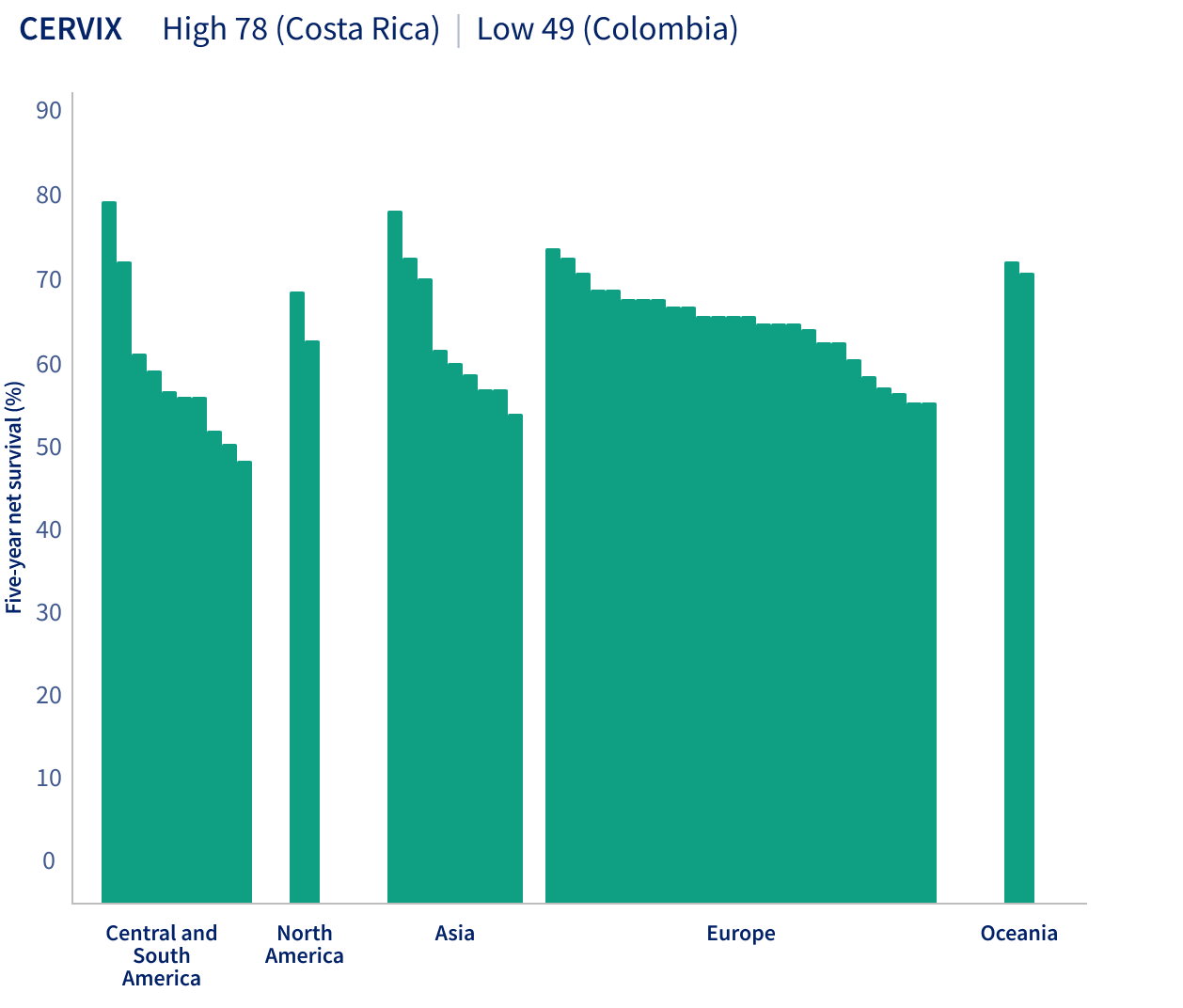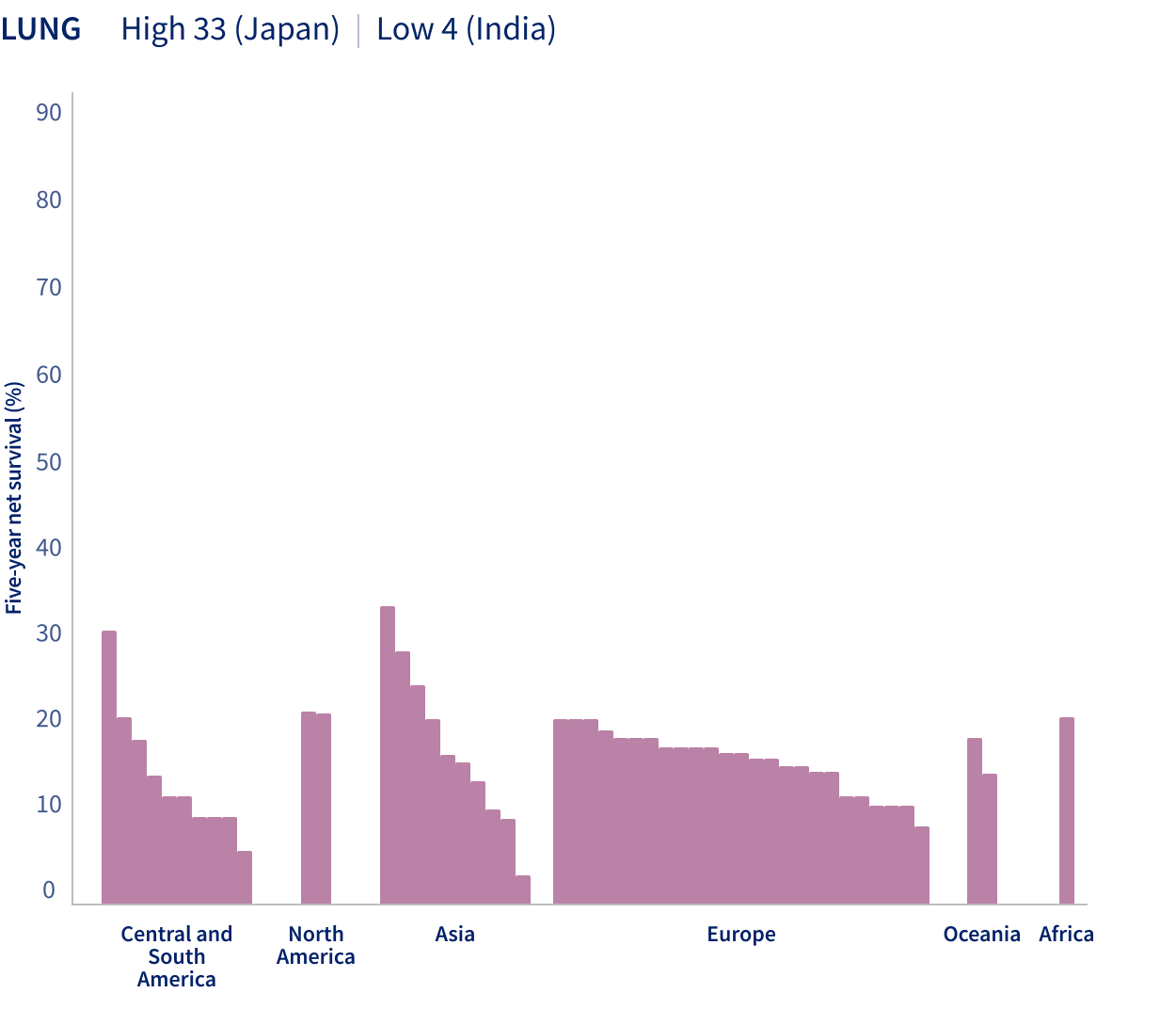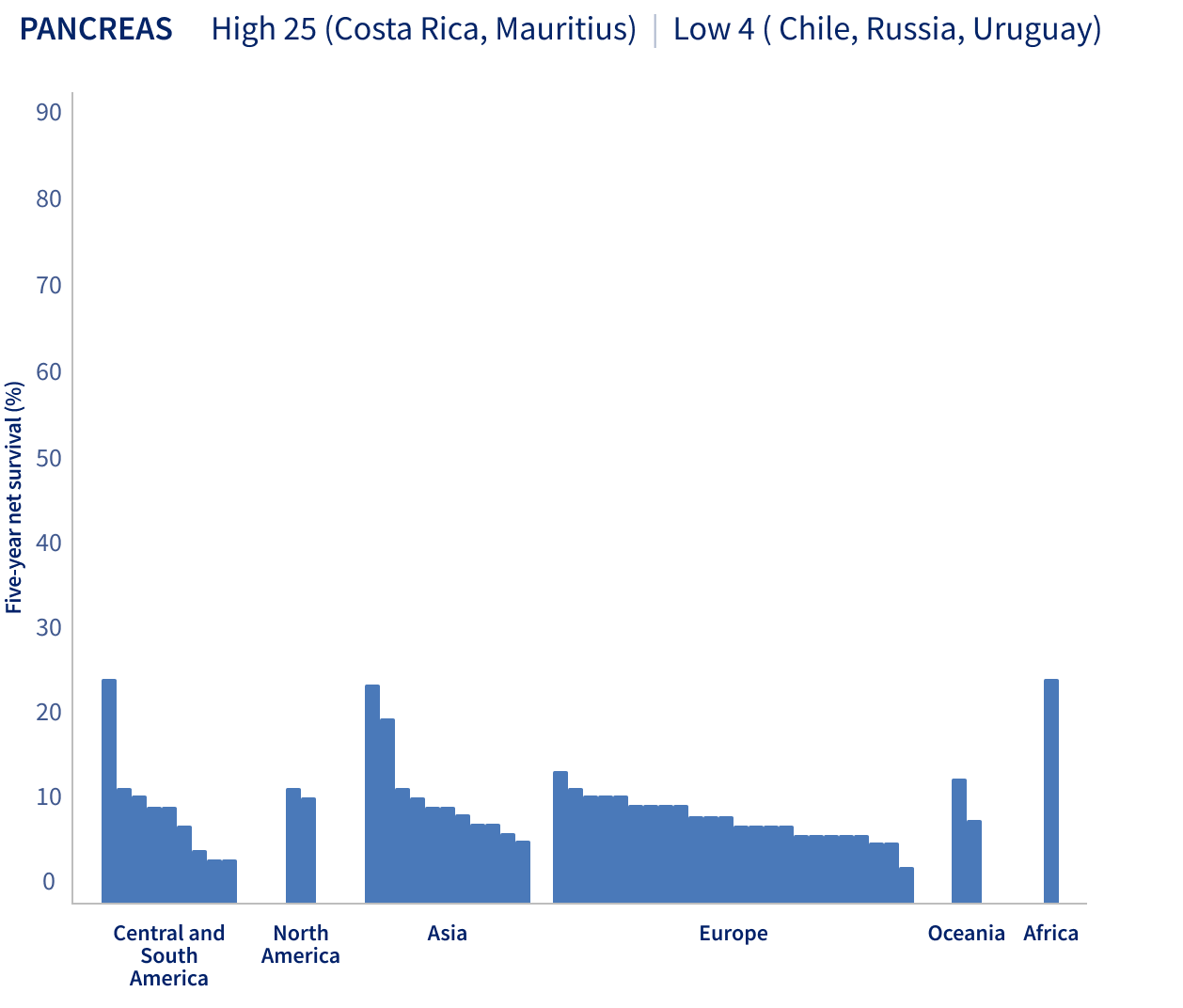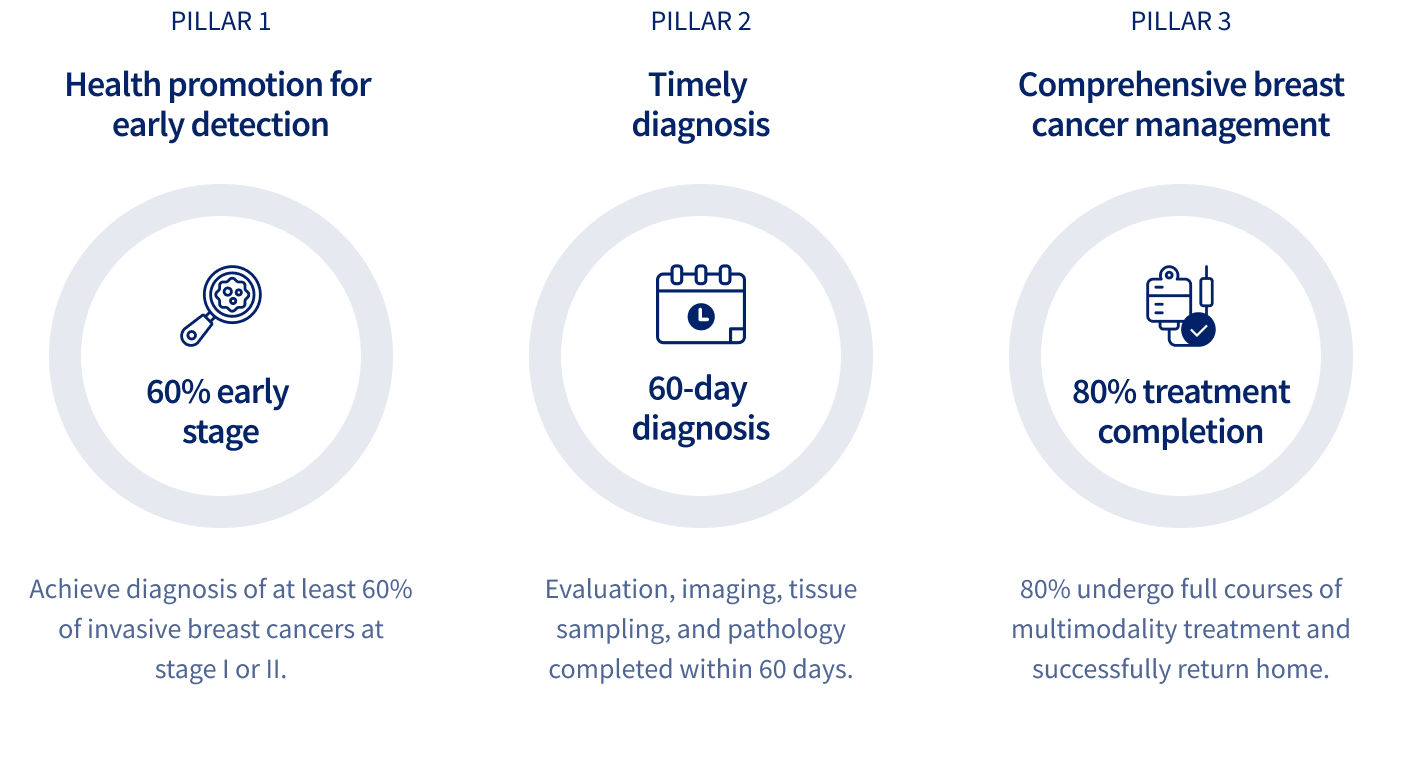Cancer Survival
Despite advancements in diagnostics and treatment, substantial disparities persist in cancer survival both between and within countries worldwide.
Cancer survival statistics highlight the degree of health care equity, reflecting the effectiveness of health systems in detecting, diagnosing, and treating cancers. Despite advancements in diagnostics and treatment, substantial disparities persist in international cancer survival both between and within countries due to inequality in the dissemination of advancements in diagnostic and treatment to all populations.
For cancers with limited advances in early detection and treatment (e.g., pancreas), survival remains poor globally (Figure 30.1). Conversely, cancers that benefit from early detection show significant disparities in survival across countries, reflecting inequalities in access to screening and timely diagnosis. The exceptionally high survival in high-income countries for certain cancers (e.g., breast, prostate) may be partially attributable to overdiagnosis, which is the detection of cancers that do not cause harm during a lifetime if left untreated.
Five-year net survival (%) of select cancers by country and continent, for cases diagnosed from 2000-2014 with follow-up through 2014




Quality of care is another important determinant of survival. A study in sub-Saharan Africa showed that receipt of guideline concordant treatment ranged from 73% in Namibia to only 13% in Uganda, contributing to disparities in cancer survival. A report from seven high-income countries with universal health coverage also showed disparities in quality of care, with chemotherapy receipt for rectal cancer patients ranging from 22% to 62%, leading to disparate survival. Survival disparities are also observed within a country. For example, cancer survival in the United States is lower among Black persons than White persons for almost every cancer type, even after controlling for stage at diagnosis, contributing to the persistent Black-White mortality gap (Figure 30.2).
Five-year relative survival by cancer stage and race in the United States, for cases diagnosed 2014–2020 with follow-up through 2021
FEMALE BREAST
Esophagus
Uterine cervix
Melanoma of the skin
Improving access to early detection and quality treatment in lower- and middle-income countries (LMICs), alongside the promotion of healthy lifestyle, are necessary steps to improve cancer survival and reduce the mortality gap globally.
“Time is shortening. But every day that I challenge this cancer and survive is a victory for me.”
To address cancer survival disparities, the World Health Organization has launched major initiatives. For example, the Global Breast Cancer Initiative aims to offer guidance to governments on delivering resource-appropriate and quality services for early detection and treatment of breast cancer (Figure 30.3).
Global Breast Cancer Initiative: Three Pillars of Action to Improve Survival and Reduce Mortality from Breast Cancer

Furthermore, provision of high-quality survival estimates is key for cancer control at both national and subnational levels. Yet survival data remain limited, especially in LMICs (Map 30.1).